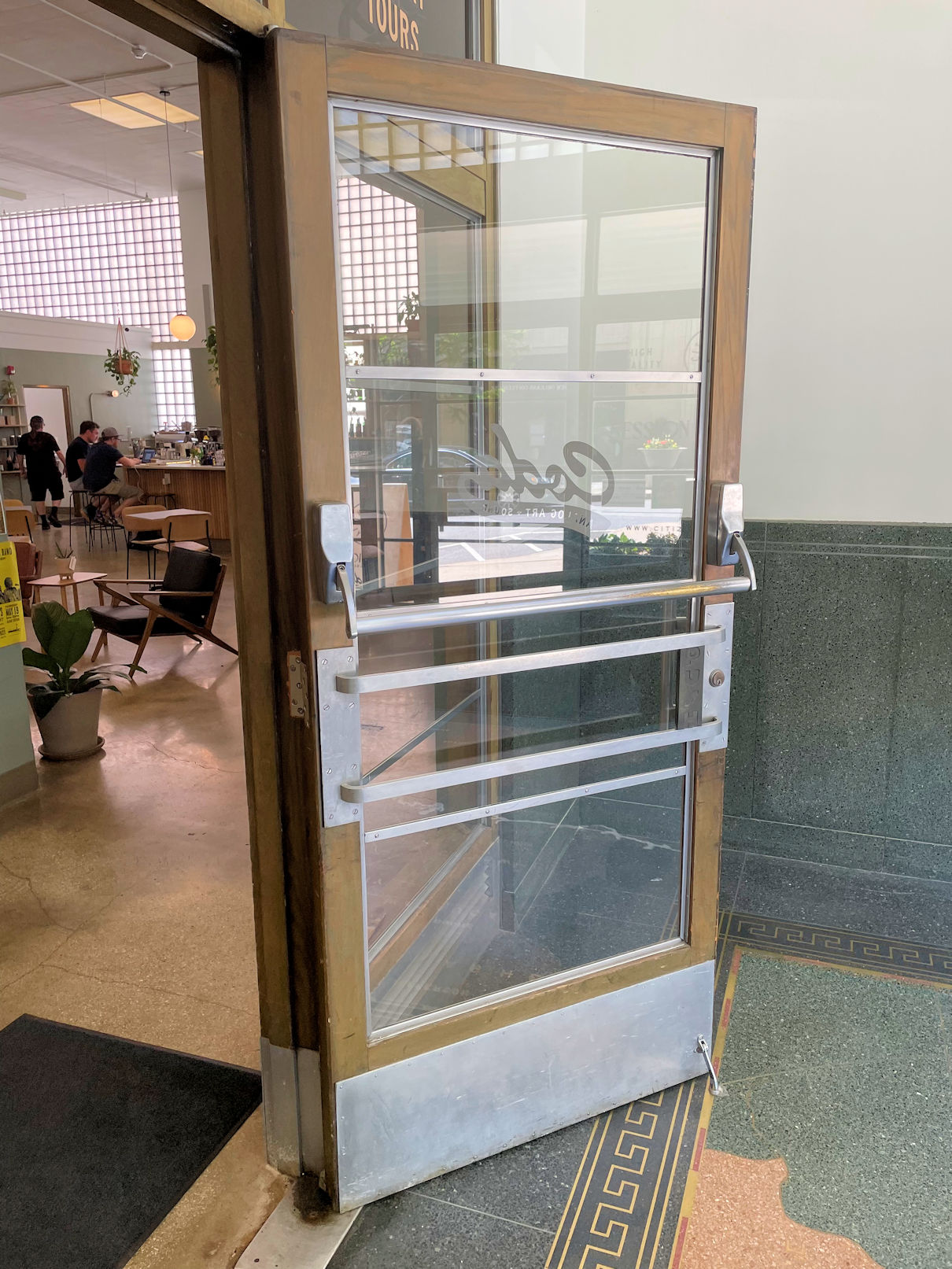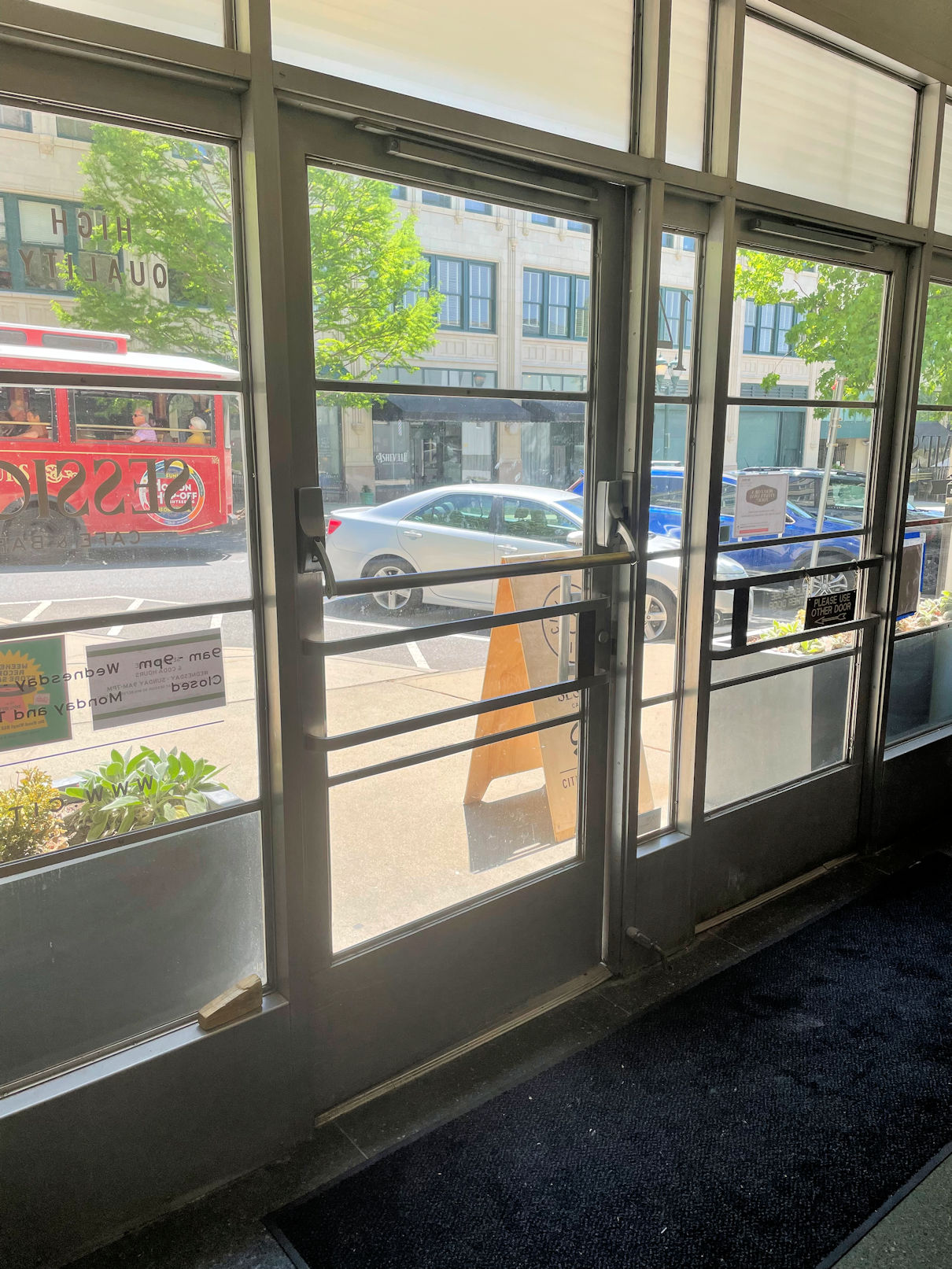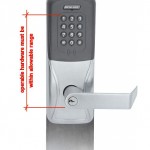 After writing about door openings every day for 13 years, I have learned that looking at something from different angles, answering similar questions in different ways, and seeing different examples really helps to clarify the code requirements. Some people can read a code requirement in a book and “get it”…others need a video, drawing, or real-life example.
After writing about door openings every day for 13 years, I have learned that looking at something from different angles, answering similar questions in different ways, and seeing different examples really helps to clarify the code requirements. Some people can read a code requirement in a book and “get it”…others need a video, drawing, or real-life example.
I have written about hardware mounting heights before. There is a Decoded article that includes the recommended mounting heights from the Steel Door Institute (SDI). I answered Quick Question about whether the entire piece of operable hardware needs to be within the allowable mounting height. California’s acceptable mounting height range is only 10 inches high (the range for most jurisdictions is 14 inches), so I wrote a post alerting readers to a potential problem in California. An issue with deadbolts and hospital latches kept coming up, so I asked what you all were seeing in a WWYD post.
I think that looking at a requirement from different perspectives really helps to settle the knowledge into a part of our brain where it’s readily accessible. I guarantee that thousands of people have walked by the doors in today’s Fixed-it Friday photos without thinking twice about them. But a retired fire marshal who has been reading iDigHardware since the early days took note of the panic hardware location and sent me the photos.
So how high is too high? According to the model codes and accessibility standards used in most states, operable hardware mounted above 48 inches is too high. Based on my very unscientific measurement methods, I think these panics are probably within the allowable range of 34-48 inches above the floor (but near the top of the range). If they were in California I would be a little less confident that they were within the 34-44 inch range required by the California Building Code, but they may still make it.
And for anyone who is wondering about the panic hardware along with the stationary crossbars, I wrote a post about that application back in 2015. And one about double-cylinder deadbolts on doors with panic hardware. 🙂
You need to login or register to bookmark/favorite this content.











So a couple of thoughts come to mind on this: one pertains to ADA and the other the potential for injuries.
As to the ADA, someone who is visually impaired or in a wheelchair might have a lot of trouble discerning which bar actually opens the door. For someone in a wheelchair (or younger children who need to reach up) they would be attempting to move the panic bar from a wrist down position which might then hit the stationary bar before the latch is retracted.
As to the potential for an injury, a pinch point hazard could result if the panic bar is mounted too close to the stationary bar. If the codes are going to permit stationary bars along with panic bars it would seem a minimum separation distance should be specified.
It might also make sense if the codes are going to permit both to specify which should be on top and which should be on bottom to provide some uniformity for occupants/users.
Just sticking to simple sight here, I’d say the hardware appears OK? If the intent is really to ensure the height of the actuation bar is within reach of most persons, the top one looks like it’s about halfway up the door which I assume to be 80″, thus the bar is at about 40″? The lower is maybe just a bit higher than halfway, seemingly under 48″, but as noted likely closer tot he 44 CA requirement.